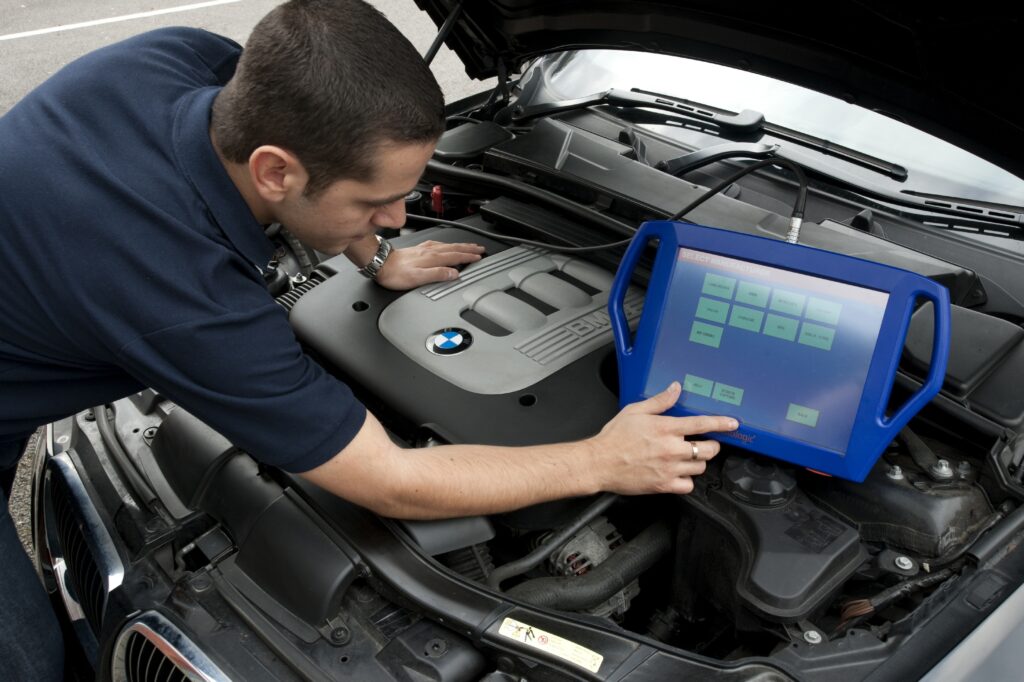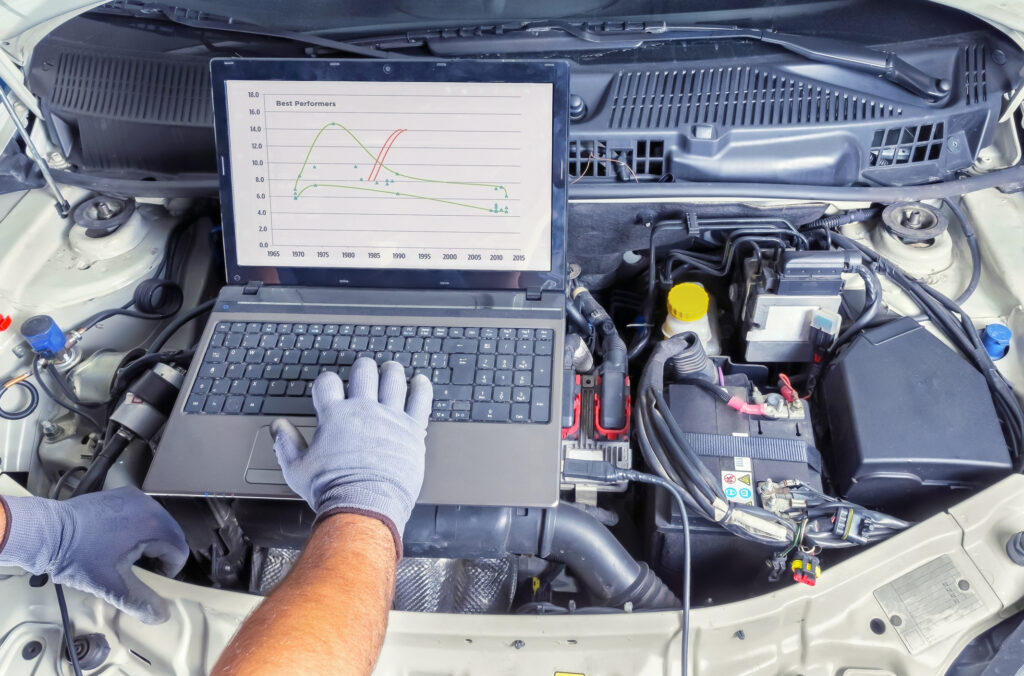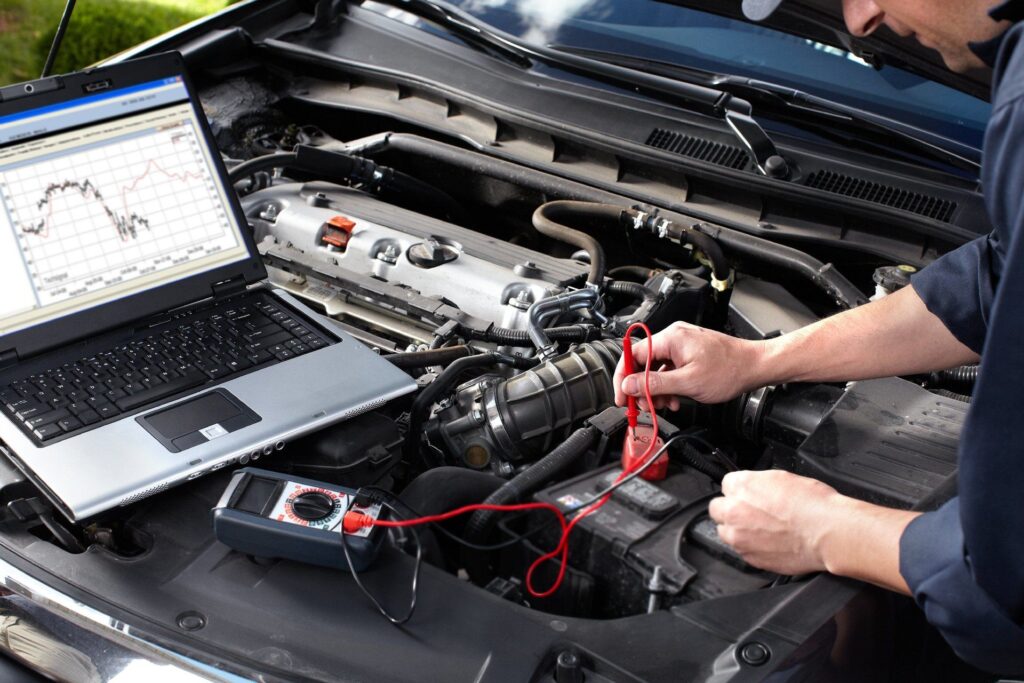what is diagnostic tool in automotive
Table of Contents

Understanding the Role of Diagnostic Tools in Automotive Industry
Automotive diagnostic tools play a crucial role in the automotive industry by helping to identify and resolve issues in vehicles. These tools, such as scan tools, scanners, and smoke machines, are used by car enthusiasts, technicians, and mechanics alike to perform diagnostics, identify faults, and repair automobiles. Thanks to advancements in technology, diagnostic tools have become more capable and complex, allowing for efficient problem-solving procedures. With the ability to read fault codes, diagnose wiring issues, and access sensor data, these tools provide valuable information about the health and performance of various vehicle components. Whether it’s checking battery voltage, engine parameters, or scanning for fault codes and programming modules, automotive diagnostic tools are essential in identifying and addressing engine performance problems, vacuum leaks, and other issues that may be wreaking havoc on a vehicle’s systems.
Conceptualizing Diagnostic Tools in Vehicles
Automotive diagnostic tools play a crucial role in ensuring the smooth operation of vehicles. These tools are essential for identifying and diagnosing engine performance issues, ensuring proper care and maintenance procedures are followed. From inspecting seals and hoses to monitoring fuel efficiency, the need for regular check-ups cannot be overstated. Taking your vehicle to a trusted street auto center for diagnostics can provide valuable insight into any fault codes or warning lights that may appear. For example, a fault code like P0301 could indicate a problem with the cylinder 1, providing important information for repairs and improving overall vehicle performance.
One of the key diagnostic tools in the automotive industry is the OBD or OBD2 scanner. This handy tool allows you to access the diagnostic trouble codes that your vehicle automatically records. By connecting the scanner to the vehicle’s OBD2 socket, it provides a quick and efficient way to clear codes and help diagnose any issues. Another useful tool is a code reader or OBD-II scanner, which allows you to perform diagnostics, identify faults, and repair vehicles with ease. These diagnostic tools provide a valuable link between the vehicle’s computer system and the technician, enabling efficient monitoring of various components and the identification of malfunctions in the engine, emission control system, and other vital systems. With the help of these tools, car owners and technicians can effectively navigate the complex world of automotive diagnostics, ensuring that any problems are addressed promptly and effectively.
Importance of Automotive Diagnostic Tools
What is a diagnostic tool in the automotive industry? In simple terms, it is a device or equipment used to diagnose and troubleshoot problems in vehicles. Whether it’s an issue with the circuit in the ignition system of your VXR PJ or a problem with the data transmission link between various components, automotive diagnostic tools come to the rescue. These tools are designed to connect to the diagnostic connector pins located under the steering column or on the dash of your car. By simply plugging in a handheld diagnostic tool, vehicle owners can access a wealth of information, including trouble codes, system operation descriptions, and even real-time data.
Automotive diagnostic tools play a crucial role in identifying and resolving issues in vehicles. For example, let’s consider a misfire condition with code P0301. With the help of a diagnostic tool, you can pinpoint the exact cause of the misfire, be it a faulty ignition coil, plug wire, or even a vacuum leak. These tools not only help you diagnose the problem but also provide step-by-step instructions for repair and replacement. Whether you are a DIY enthusiast or a professional mechanic, having access to automotive diagnostic tools is essential for efficient and effective maintenance and repair.
Different Types of Automotive Diagnostic Tools
Automotive diagnostic tools play a crucial role in the field of automotive engineering and business. These tools are designed to help mechanics and technicians identify and fix faults and issues in vehicles. One type of diagnostic tool is the OBD or OBD2 scanner, which allows users to retrieve diagnostic trouble codes recorded by their vehicles. Another type of tool is the code reader or OBD-II scanner, which can be plugged into the OBD2 port to clear codes and assist in diagnostics. These tools provide an efficient and effective way to perform vehicle diagnostics, identify faults, and perform necessary repairs. With the range of options available, it is important to carefully consider the features and capabilities of each tool before making a purchase.
Onboard Diagnostic Tools
An ODB or ODB2 scanner is an automotive diagnostic tool that is used to retrieve the diagnostic trouble codes that your vehicle automatically records. These tools are essential in identifying and troubleshooting issues in your vehicle. Whether it’s a faulty thermostat, a water pump problem, or an issue with the unit’s operating temperature, an ODB scanner can provide you with the necessary details to address the concerns. With the help of a pressure testing kit, a fuel pressure gauge, and a multimeter, you can effectively test the fuel system, identify leaks in the vacuum line, and measure voltage and resistance in various components. These tools are a must-have for any DIY mechanic or professional in the automotive industry.
Another automotive diagnostic tool that is widely used is the code reader or OBD-II scanner. This tool provides an easy path for diagnosing and fixing problems in your vehicle. By scanning your car’s computer system, it can quickly identify faults and provide you with the necessary information to repair your vehicle. Whether it’s detecting issues with the sensor, heater core, radiator, or corrosion in the fuel system, a code reader can help you pinpoint the problem areas. Additionally, tools such as stethoscopes and telescoping mirrors can assist in diagnosing car problems that are difficult to access. By using these diagnostic tools, car owners can save time, money, and the headache of unnecessary garage visits, as well as gain a better understanding of their automobile’s health.
Handheld Diagnostic Tools
What is a diagnostic tool in the automotive industry? Handheld diagnostic tools are basic yet quality tools that editors of products use to find the problem occurring in a vehicle. These tools can be in the form of circuit testers, code readers, or OBD-II scanners. They provide an easy path for diagnosing and fixing problems in vehicles. For example, circuit testers can test light functions, check voltage and amperage, and identify circuit issues without the risk of damaging the vehicle’s circuits. Handheld diagnostic tools are convenient and can be used for various vehicle types, including cars, trucks, and bikes. With the advances in technology, some handheld diagnostic tools can now be connected to a tablet or mobile phone for ease of use.
Handheld diagnostic tools have several pros and cons. One of the pros is their portability. Unlike PC-based diagnostic tools, handheld tools do not require a power supply or a direct connection to a computer. They can be easily carried around and used anywhere. Another advantage is their ability to provide real-time data and live readings on the screen, allowing for instant problem identification. However, handheld diagnostic tools also have some limitations. They may not have the same level of functionality as professional automotive diagnostic tools, and the screen size may be smaller, limiting the amount of information that can be displayed. Additionally, some handheld diagnostic tools may have limited software updates, which can affect their compatibility with newer vehicle models. Overall, handheld diagnostic tools offer convenience and growth opportunities in the automotive industry.
Professional Automotive Diagnostic Tools
Professional automotive diagnostic tools are essential for understanding and resolving issues in vehicles. An OBD or OBD2 scanner is one such tool that can be used to retrieve the diagnostic trouble codes recorded by the vehicle. These automotive diagnostic tools are valuable in identifying faults and providing solutions. A code reader or OBD-II scanner is a convenient option for diagnosing and fixing problems in cars. It allows for easy access and clear understanding of the trouble codes, making the process of troubleshooting and repairs more efficient and cost-effective.
One example of a professional automotive diagnostic tool is the Carscan Advisor from Robert Bosch GmbH. This tool not only helps diagnose engine failures, but also provides insights into other parts of the vehicle. Additionally, it offers capabilities beyond just scanning trouble codes, with features like data streaming, freeze frame data, and live data. With the advancement of technology, automotive diagnostic tools are becoming more sophisticated, offering better solutions for mechanics and vehicle owners alike.

The Operation of Automotive Diagnostic Tools
An automotive diagnostic tool is a flat out necessity in today’s technologically advanced cars. With the increasing use of artificial intelligence and computer systems in vehicles, it’s a fact that cars generate a lot of code. Sometimes, these codes are just nonsense, but other times they indicate a potential issue with the car’s performance. The most common way to access this information is through the use of OBD or OBD2 scanners, which are devices that can be plugged into the OBD2 socket in your vehicle. These scanners provide the necessary data measurements and information to help identify any problems or issues with your car. With the right diagnostic tool, mechanics and car owners alike can get a better idea of what’s going on under the hood and make informed decisions about repairs and maintenance. So, whether you’re a professional or a DIY enthusiast, having the right diagnostic tool is key to keeping your vehicle in good health.
Basics of Diagnostic Tool Utilization
Diagnostic tools in the automotive industry play a crucial role in identifying and resolving issues with vehicles. These tools are designed to provide valuable information about the performance of various components and systems in a car. With features like user manuals and references, diagnostic tools help users navigate through complex menu items and connect to different ports, such as the OBD-I port. By simply plugging in the diagnostic tool, users can access a wealth of information, including error codes, trouble codes, and step-by-step instructions on how to diagnose and fix the problem. This makes diagnostic tools an essential starting point for repairs, saving both time and money.
An OBD or OBD2 scanner is a prime example of an automotive diagnostic tool that gives users a head start in identifying issues with their vehicles. Also known as Automotive Diagnostic Tools, these scanners can be easily plugged into the OBD2 socket, providing a direct connection to the car’s onboard diagnostics system. By using this tool, users can clear error codes, perform diagnostics, and identify faults in various systems like the ignition system or engine components. The scanner acts as a bridge between the car’s software and the user, providing real-time explanations and descriptions of error codes. With the ability to access such information, users can effectively diagnose and fix their car’s issues with confidence and precision. This saves them the hassle of visiting a garage and potentially helps avoid costly repairs.
Identifying Common Error Codes
An automotive diagnostic tool, such as an OBD or OBD2 scanner, is a valuable device that enables you to identify common error codes in your vehicle. These tools are essential in the automotive industry as they allow mechanics and technicians to diagnose and fix problems efficiently. With the help of a diagnostic tool, you can connect it to your car’s OBD2 socket and view data readouts, clear fault codes, and perform diagnostics to identify and repair any faults. Whether you are a car mechanic or a DIY enthusiast, having an automotive diagnostic tool in your toolbox is a must for accurate and reliable problem diagnosis.
One of the main functions of an automotive diagnostic tool is to provide data access to view and interpret error codes that your vehicle’s onboard computer system records. When a fault occurs, your car’s engine warning light or dashboard warning lights may illuminate to indicate the issue. By connecting a diagnostic tool to the OBD port, you can retrieve the specific error code and gain insights into the problem. These codes are standardized and follow a specific format, allowing mechanics and technicians to quickly identify the fault. For example, a fault code starting with “P” indicates an issue with the powertrain, while a code starting with “B” indicates a problem with the body system. Being able to access and interpret these error codes not only saves time but also helps in accurately diagnosing and resolving the problem in your vehicle.
Benefits of Using Automotive Diagnostic Tools
Automotive diagnostic tools are essential in the maintenance and repair of vehicles. These tools, such as car scanners or OBD-II scanners, provide an easy path to identify and diagnose problems in a car’s system. By plugging the scanner into the OBD2 socket, users can retrieve diagnostic trouble codes and gain insight into the issues their vehicle is experiencing. This information helps the car diagnostics expert or even an average car owner to perform diagnostics, identify faults, and make the necessary repairs. With the support of these tools, the process of resolving car problems becomes more efficient and cost-effective, saving both time and money. Consequently, it is crucial to invest in high-quality scanners or testers, such as those from the Topdon range, to ensure accurate results and reliable guidance for car repairs.
Quick and Reliable Problem Diagnosis
Automotive diagnostic tools play a crucial role in quickly and reliably diagnosing problems in vehicles. These tools, such as the OBD or OBD2 scanner, are essential in identifying fault codes and errors that the car’s computer system automatically records. By providing an easy path for diagnosing and fixing issues, these tools enable technicians to perform efficient vehicle diagnostics. They help identify faults, allowing for timely repairs and ensuring the vehicle’s optimal functionality. Whether it’s a code reader, OBD-II scanner, or other diagnostic tools, their presence in the automotive field reduces the risk of overlooking crucial issues and provides a backup for identifying the root cause of problems.
One of the key advantages of automotive diagnostic tools is their ability to provide quick solutions for identifying and resolving problems. They assist in locating and diagnosing faults in the engine management system, tire pressure reduction, and other vital vehicle elements. These tools can perform tasks like checking resistance and charge condition, as well as analyzing the functionality of various components. With the majority of cars now equipped with computer systems that display warning lights on the dashboard, having a car diagnostic machine becomes essential for fault finding. The capability to scan the car engine and identify specific fault codes makes these tools a valuable asset in the automotive industry, allowing technicians to promptly address issues and provide necessary repairs.
CostEfficient Maintenance Solutions
Cost-efficient maintenance solutions are crucial in the automotive industry. Diagnostic tools play a significant role in identifying and resolving vehicle system errors. An OBD or OBD2 scanner is a device that can be plugged into an OBD2 socket to clear codes and help diagnose and repair vehicles. These automotive diagnostic tools provide an easy path for end-users to perform diagnostics, identify faults, and ultimately ensure efficient vehicle repairs. By reading and interpreting the error codes recorded by the vehicle’s diagnostics system, mechanics, and even car owners can quickly address concerns and minimize the expenses associated with extensive repairs.
With the advancement in technology, automotive diagnostic tools have become more user-friendly and accessible. An array of tools, such as code readers and OBD-II scanners, are available to cater to the diverse requirements of users. These tools enable individuals to access vehicle data, including fault codes and diagnostic data points, through screens or even mobile apps. Through the interpretation of this data, users can effectively address maintenance concerns, make necessary replacements or repairs, and ultimately enhance vehicle health. The benefits of using diagnostic tools extend beyond cost-efficiency, as they also contribute to safer mobility on the roads, reduced instances of accidents, and improved compliance with regulations in the automotive and law enforcement industries.

Buying Guide for Automotive Diagnostic Tools
When buying automotive diagnostic tools, it is important to understand what these tools are and how they work in vehicles. Diagnostic tools are safety systems that analyze and monitor various vehicle systems, such as the engine, transmission, and braking systems. They are used to identify faults and error codes in the vehicle’s control units, memory units, and other components. One popular type of diagnostic tool is the code reader or OBD-II scanner, which can be plugged into the vehicle’s OBD2 socket to perform diagnostics and identify faults. Another option is a tablet or GPS device with an end-user interface that allows technicians to scan and diagnose vehicles using communication signals. These tools offer several advantages, such as quick problem diagnosis, cost-efficient maintenance solutions, and the ability to fix issues before they become major problems.
Essential Features to Look for
When looking for essential features in an automotive diagnostic tool, it is important to consider what the tool is capable of in terms of diagnosing vehicle issues. An ODB or ODB2 scanner, for example, allows you to retrieve the diagnostic trouble codes that your vehicle automatically records. This data can be essential in identifying faults and performing diagnostics to repair your vehicle. Additionally, an automotive diagnostic tool should provide an easy path for diagnosing and fixing problems in your vehicle. A code reader or OBD-II scanner, for instance, can be plugged into an OBD2 socket to clear codes and help with the diagnosis and repair process. These tools are invaluable for mechanics, as they can quickly and accurately diagnose vehicle issues, saving time and resources.
In addition to diagnosing vehicle issues, it is crucial for an automotive diagnostic tool to prioritize data protection. With the advancement of car technology, vehicles are becoming increasingly connected, meaning that personal and sensitive information is stored within their systems. Therefore, a diagnostic tool should have measures in place to protect this data, such as secure connections and data encryption. It is important for diagnostic tools to comply with industry standards, such as ISO27001 and TISAX, to ensure conformance with data security practices. Furthermore, the tool should have user-friendly features, such as a customer portal or email notification system, to provide an easy and secure way for users to access diagnostic data and request assistance. By prioritizing data protection, the automotive industry can ensure that diagnostic tools provide a safe and reliable solution for diagnosing and repairing vehicles.
Recommendations for Best Diagnostic Tools
When it comes to choosing the best automotive diagnostic tool, there are several options to consider. One popular choice is the OBD or OBD2 scanner, which allows you to retrieve the diagnostic trouble codes that your vehicle automatically records. These tools are essential for identifying faults and performing diagnostics on your vehicle. Additionally, a code reader or OBD-II scanner provides an easy path for diagnosing and fixing problems in your vehicle. With the ability to clear codes and help diagnose issues, these tools are a must-have for any workshop or service professional.
Another recommendation for the best diagnostic tools is the use of handheld scanners. These small, portable devices offer convenience and versatility in diagnosing and repairing vehicles. With a handheld scanner, you can easily perform diagnostics, identify faults, and even clear codes on the go. These tools are especially useful for mobile workshop use or for technicians who need to diagnose vehicles in different locations. With wireless connectivity options such as Bluetooth, these scanners provide quick and efficient diagnostic capabilities for a wide range of makes and models.
Tips for Use and Maintenance of Diagnostic Tools
Automotive diagnostic tools play a crucial role in the maintenance and repair of vehicles. These tools are essential for identifying and resolving any issues that may arise in various components of a vehicle. An OBD or OBD2 scanner is one such diagnostic tool that enables technicians to retrieve diagnostic trouble codes stored in a vehicle’s computer system. These codes provide valuable information about the specific problem occurring in the vehicle. Additionally, diagnostic tools like code readers and OBD-II scanners offer a convenient and efficient way to diagnose and resolve issues by providing clear and concise readouts of fault codes. With the advancement of technology, diagnostic tools have become more sophisticated and now offer a wide range of functions, including the ability to perform diagnostics, identify faults, and even repair vehicles. They are also compatible with different vehicle brands and models, making them a valuable companion for professionals in the automotive industry. Regular maintenance and proper use of these tools ensure their longevity and accuracy, allowing technicians to continuously provide reliable solutions for their customers. Thanks to automotive diagnostic tools, mechanics and technicians have the opportunity to effectively troubleshoot and fix problems in vehicles, including safety systems, driver assistance systems, and other components.

Conclusion
Automotive diagnostic tools play a crucial role in the automotive industry.
These tools are designed to help technicians and drivers identify and repair issues in vehicles. With the advancement in automotive technologies, the complexity of vehicles has increased, making it challenging to diagnose and fix problems without the use of diagnostic tools. From simple tasks like checking fault codes to more complex operations like calibrating sensors, automotive diagnostic tools provide the necessary information and functionalities to ensure the safety, performance, and longevity of vehicles.
Whether it is hybridisation, electrification, or the integration of advanced driver-assistance systems (ADAS) such as pedestrian detection cameras, diagnostic tools are essential for maintaining the comfort and standard of vehicles. The future of automotive diagnostics looks promising, with OE expertise, sector coverage, and an abundance of information available at the fingertips of technicians and drivers. However, it is important to be cautious and knowledgeable when purchasing diagnostic tools, as the market is filled with counterfeit products. Having confidence in the quality and authenticity of the diagnostic tool is crucial for the success and profitability of any diagnostic business. By investing in reliable and genuine automotive diagnostic tools, garages and technicians can unlock the full potential of their knowledge and skills, providing accurate fault codes, look-up functions, and reporting functions for a wide range of vehicle models.
In conclusion, automotive diagnostic tools are like fortune-tellers, unraveling the mysteries of vehicle issues and providing everything needed to keep vehicles running smoothly. The majority of maintenance tasks can be performed with the help of these tools, from resetting fault codes to performing complex diagnostic procedures. Having the right diagnostic tool is a matter of pride and confidence in one’s workshop capabilities, ensuring customer satisfaction and business potential in the automotive industry.
What is a diagnostic tool in automotive?
An automotive diagnostic tool is a device that is used to identify and diagnose potential problems with a vehicles engine, transmission, exhaust system and other essential parts.
How does an automotive diagnostic tool work?
Automotive diagnostic tools work by being connected to the onboard computer systems of a vehicle. They read and interpret data from these systems to pinpoint any abnormalities or faults which may be causing performance issues or mechanical failures.
Why are automotive diagnostic tools important in maintenance?
Diagnostic tools are crucial in maintenance as they can detect issues early on before they become more severe and costly to repair. They also ensure the vehicle functions at its best by monitoring its systems continuously.
Can an automotive diagnostic tool be used for medical diagnosis purposes?
No, an automotive diagnostic tool cannot be used for medical diagnosis purposes. While both types of diagnostics share the objective of finding problems, they involve different areas of expertise and use completely separate types of equipment.
Are there different types of automotive diagnostic tools?
Yes, there are various types of automotive diagnostic tools such as OBD-II scanners for general car-related issues, specialized scanners designed for specific car makes and models, multimeters for electrical problems, and oscilloscopes for complex electronic diagnoses among others.
My Services
what is diagnostic tool in automotive
